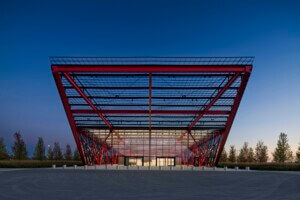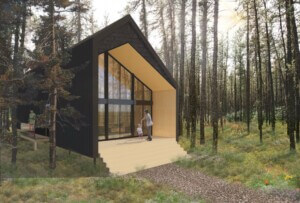Chris Cornelius, founder of Milwaukee-based studio:indigenous, knew what he wanted to do when he started graduate school at the University of Virginia. His goal was no less than to develop an architecture that is based in the timeless worldviews of Native Americans. For the past decade, that goal has been unwavering, and has led to award-winning built and unbuilt work.
Cornelius is a member of the Oneida Nation, and the stories and traditions of native peoples are a key part of his identity. Every project by studio:indigenous starts with an intensive investigation of the narratives surrounding the client’s needs. Often working for Wisconsin tribes, Cornelius’s designs depart from the all-too-common iconographic motifs built on many reservations. (There is more than one turtle-shaped building in the Oneida Nation.) Rather, the work is consciously produced outside of a specific style and without direct reference to native architecture or symbolism. Instead of relying on historical sweat lodge structures for the sweat lodge-changing room at the Indian Community School of Milwaukee, Cornelius repurposed the stones that are used in the ceremonies held in the steamy sacred spaces as a base for the design. In the Oneida Veterans Memorial, on the Wisconsin Oneida Reservation, the long history of the Oneida’s service to the United States is manifest in the scaled timeline stretching though three acres of prairie grass.
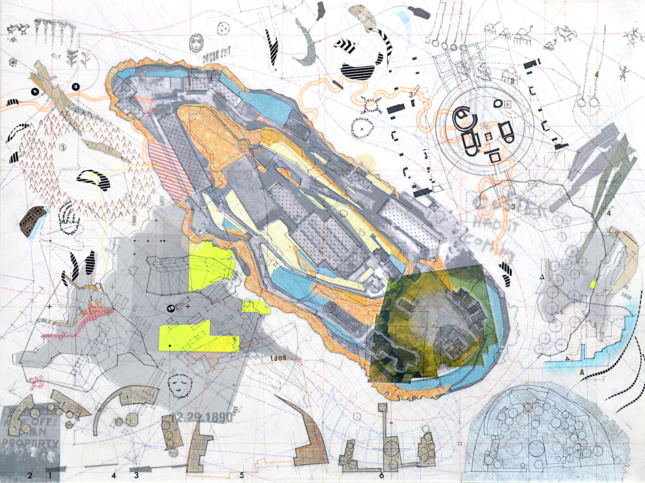
“I realized at some point along this journey that I am not going to tie into anything stylistically,” said Cornelius. “I had to be able to trust myself. Most important to me, first and foremost, was to be a good architect. The Native American thing is not going to change; it’s who I am. So I have allowed my voice to express itself. That has turned into an aesthetic that is latent to the process.”
Cornelius works through complex drawings and models, producing images and forms that embody the narratives of his projects. The drawings, which have been recognized with multiple architectural and artistic awards, are intricately layered with colors, lines, and shapes. While times were slow during the recession, this drawing technique became an outlet for his continued research into articulating native narratives into formal operations. A series of drawings, entitled Radio Free Alcatraz, is a study of the Native American Occupation of Alcatraz Island in the late 1960s. A self-initiated project, Radio Free Alcatraz imagines that Native Americans never left Alcatraz and were planning to build a university on the island. Other similar projects formalize small pavilions based on the Oneida calendar.
Yet it is not only Native clients that have found value in studio:indigenous’s design approach. The focus on culture resonates with many groups that have strong cultural identities. studio:indigenous has worked with communities throughout Milwaukee, and found that the techniques translate across cultures and traditions. In every case, though, Cornelius sees the work not only as an embodiment of stories and traditions of the past, but also as the development of a contemporary story.
“The architecture is part of the current story,” Cornelius said. “What is it that we want to make or achieve? The stories haven’t necessarily changed, but the
characters have.”

Indian Community School
Milwaukee, WI
The true genesis of studio:indigenous came about through a collaboration with Antoine Predock for the Indian Community School, just outside of Milwaukee. Completed in 2007, the goal was to help ensure that the architecture was an accurate translation of the cultural values of the 11 Native Nations represented in the student body. The pre-kindergarten-through-eighth-grade, 150,000-square-foot school also serves as a community center for the Native American population of the Milwaukee area.
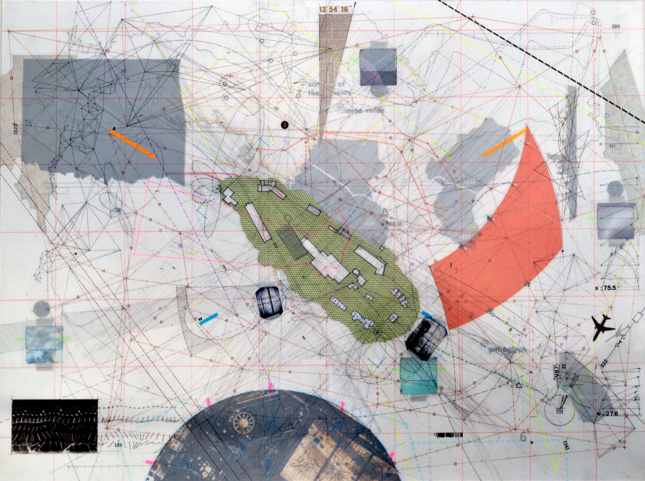

Radio Free Alcatraz
San Francisco, CA
A speculative look at the occupation of Alcatraz Island in the San Francisco Bay, Radio Free Alcatrazimagines a new Native American University, part of the occupiers’ original plan. Through complexly layered drawings, sketches, and multimedia, the speculations are put on paper to be reflected upon. Historical, contemporary, and speculative forms and information are blended together in each drawing to produce a new understanding of the island and its possibilities.
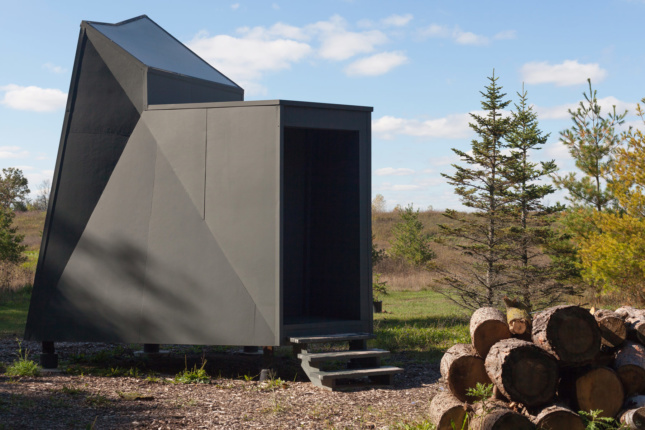
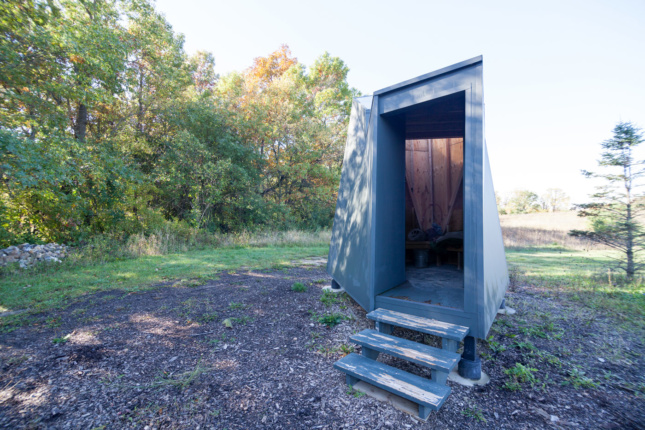
Sweat Lodge Changing Room
Milwaukee, WI
Known as the “Grandfather Stone,” the Sweat Lodge Changing Room for the Indian Community School of Milwaukee takes the form of a stone used in sweat lodge rituals. The gray form is meant to appear as if it had emerged from the earth and has always been in its location.

Oneida Maple Sugar Camp
Oneida, WI
“tsi? watsikhe? tu-nihe,” or “The Place Where They Make Maple Sugar,” is an 800-square-foot project designed for the Oneida Tribal School in Oneida, Wisconsin. Along with providing the infrastructure to boil maple sap down to syrup, the building is an observational device. The ventilation cone provides a view of the “seven dancers”—the Pleiades—when the constellation is directly overhead during the Midwinter Ceremony.
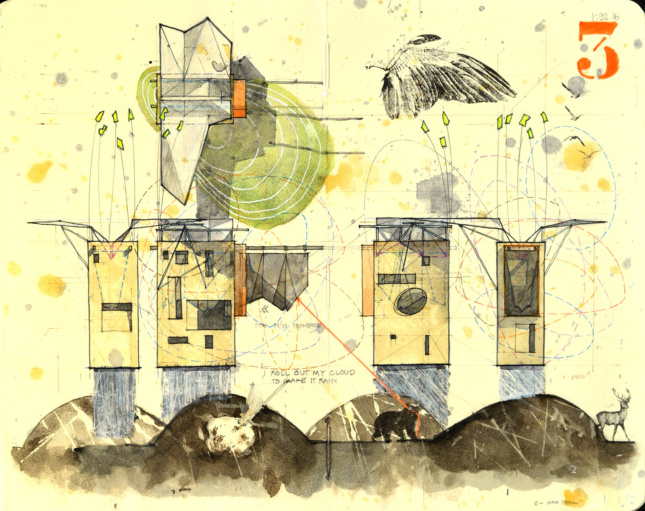
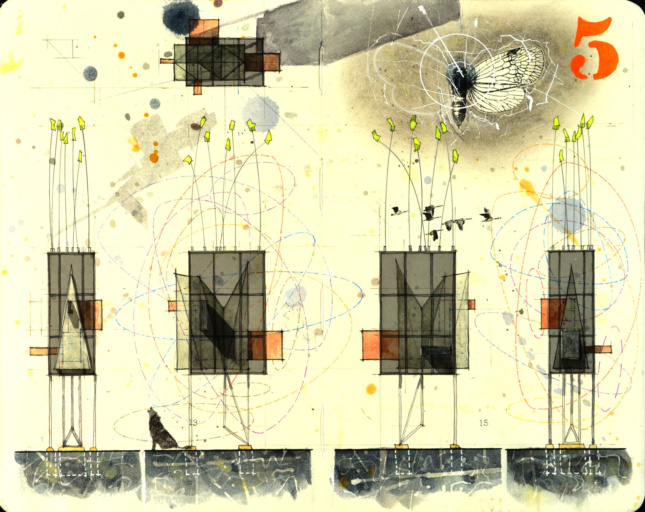
Moon Domicile
Conceptual
The Moon Domicile series is based on the moon calendar of the Oneida Nation. Each moon cycle throughout the year is associated with a specific ceremony or ritual. Each of the domiciles is formalized through these traditions, as well as the natural weather phenomena of each time of year. The narrative surrounding the Moon Domicile is ambiguous about whether each of the small projects would be created by human, animal, or other.









